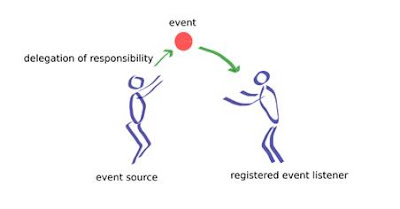Java Hibernate Introduction
Java Hibernate
Introduction
·
Hibernate is an
open source object relational mapping tool used in Java programming.
·
Hibernate
allows data to be inserted, removed or changed in a database without paying a
lot of attention to how it gets there.
·
Hibernate was
founded by Mr. Gavin King, an Australian developer who needed to solve a
problem and ended up creating Hibernate, an open source tool that is amazingly
useful with JAVA.
·
The central
idea of Hibernate is this: “JAVA programmers are used to creating POJOs [Plain
Old Java Objects] in Java. So why do they need a second language like SQL,
to put or apply (persist) those POJOs into the database? ”
·
Hibernate does
object-relational persistence and querying. That means Hibernate puts whole
objects into a relational database and pulls whole objects out of a relational
database.
When Can I Use Hibernate?
Hibernate can be used in any Java program that needs to
access a relational database. Hibernate does not need an application server to
run.
When Should I Use Hibernate?
There are main three points at where Hibernate is use if:
- There is a non-trivial application
- There are more than 10 tables in the relational DB.
- The application uses an object-oriented Domain Model.
If the application does a lot of business logic—and does
much more than just display tables of data on a webpage—then it is a good
candidate for Hibernate.
Hibernate is best in applications with complex data
models, with hundreds of tables and complex inter-relationships.
Advantages of Hibernate
Framework
There are many advantages of
Hibernate Framework. They are as follows:
1) Opensource and
Lightweight: Hibernate framework is
opensource under the LGPL license and lightweight.
2) Fast performance: The performance of hibernate framework is fast because cache is internally used in hibernate framework. There are two types of cache in hibernate framework first level cache and second level cache. First level cache is enabled bydefault.
3) Database Independent query: HQL (Hibernate Query Language) is the object-oriented version of SQL. It generates the database independent queries. So you don't need to write database specific queries. Before Hibernate, If database is changed for the project, we need to change the SQL query as well that leads to the maintenance problem.
4) Automatic table creation: Hibernate framework provides the facility to create the tables of the database automatically. So there is no need to create tables in the database manually.
5) Simplifies complex join: To fetch data form multiple tables is easy in hibernate framework.
6) Provides query statistics and database status: Hibernate supports Query cache and provide statistics about query and database status.
2) Fast performance: The performance of hibernate framework is fast because cache is internally used in hibernate framework. There are two types of cache in hibernate framework first level cache and second level cache. First level cache is enabled bydefault.
3) Database Independent query: HQL (Hibernate Query Language) is the object-oriented version of SQL. It generates the database independent queries. So you don't need to write database specific queries. Before Hibernate, If database is changed for the project, we need to change the SQL query as well that leads to the maintenance problem.
4) Automatic table creation: Hibernate framework provides the facility to create the tables of the database automatically. So there is no need to create tables in the database manually.
5) Simplifies complex join: To fetch data form multiple tables is easy in hibernate framework.
6) Provides query statistics and database status: Hibernate supports Query cache and provide statistics about query and database status.
Java Hibernate
Architecture
To use Hibernate, it is required to create Java classes
that represents a table in the database and then map the instance variable in
the class with the columns in the database.
Then Hibernate can be used to perform operations on the
database like select, insert, update and delete the records in the table.
Hibernate automatically creates the query to perform
these operations.
For that Hibernate architecture has three main
components:
1. Connection Management
2. Transaction management
3. Object relational mapping
The following diagram describes the high level
architecture of hibernate:
The above diagram shows that Hibernate is using the
database and configuration Data (Hibernate.prpperties and XML Mappping) to
provide persistence services (and persistent objects) to the application.
(1)Connection Management:
Hibernate Connection management service provide efficient
management of the database connections. Database connection is the most
expensive part of interacting with the database as it requires a lot of
resources of open and close the database connection.
(2)Transaction management:
Transaction management service provides the ability to
the user to execute more than one database statements at a time.
(3)Object relational mapping:
Object relational mapping is technique of mapping the
data representation from an object model to a relational data model. This
part of hibernate is used to select, insert, update and delete the records form
the underlying table.
When we pass an object to a Session.save() method,
Hibernate reads the state of the variables of that object and executes the
necessary query. Hibernate provides a lot of flexibility in use. It is
called "Lite" architecture when we only use the object relational mapping
component.




Comments
Post a Comment